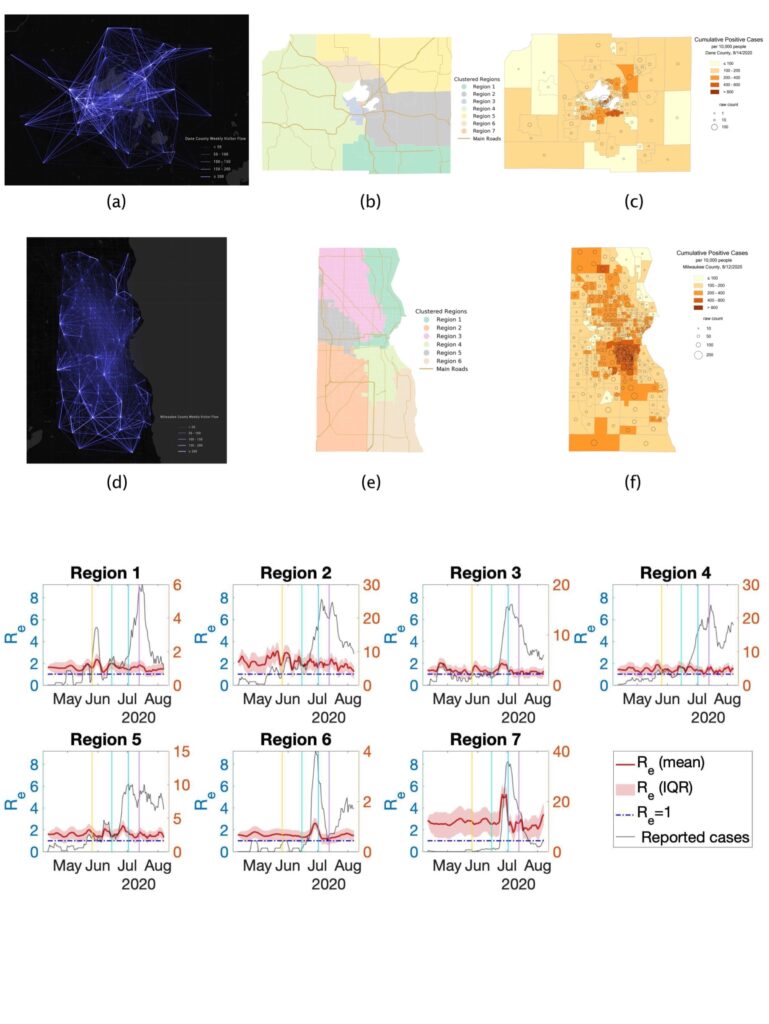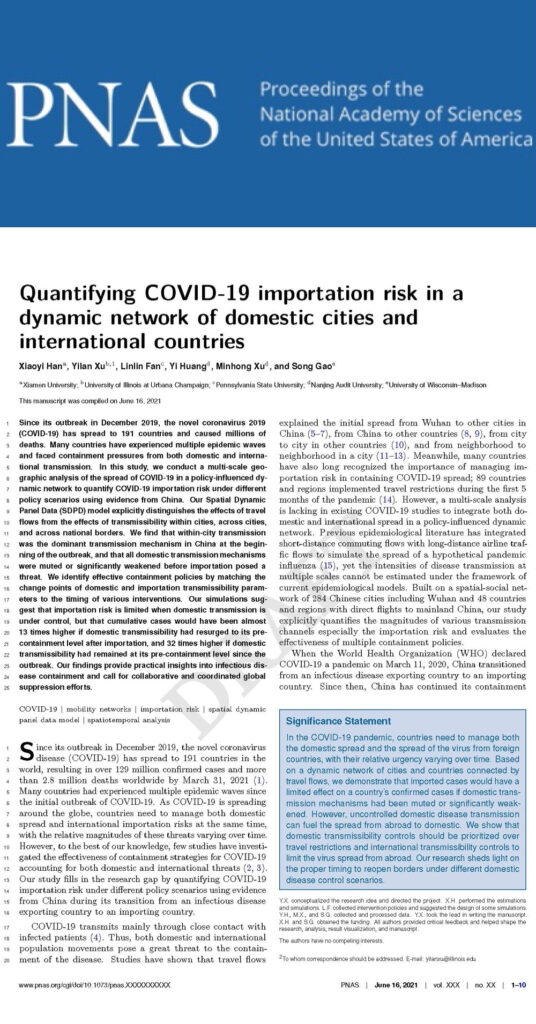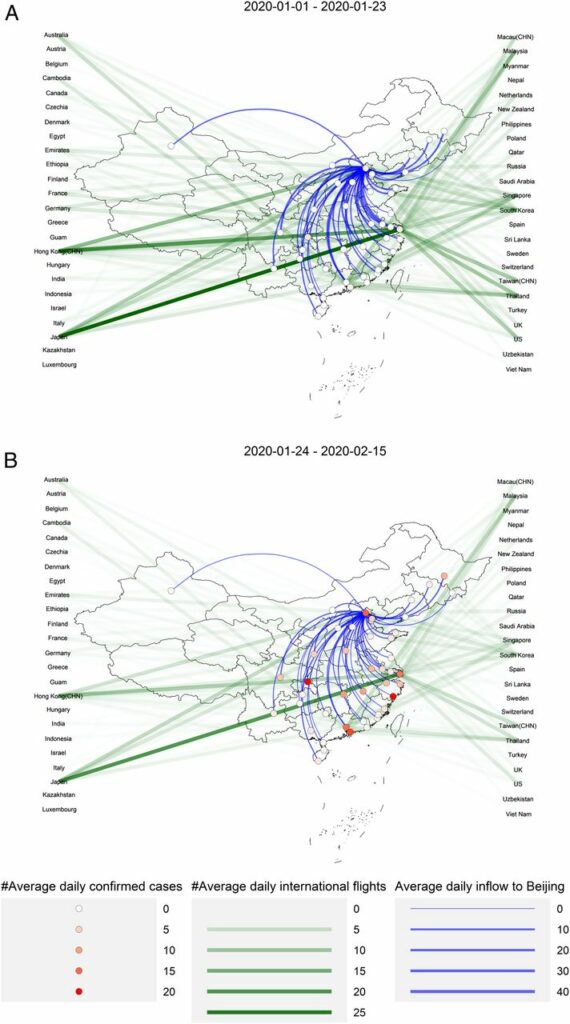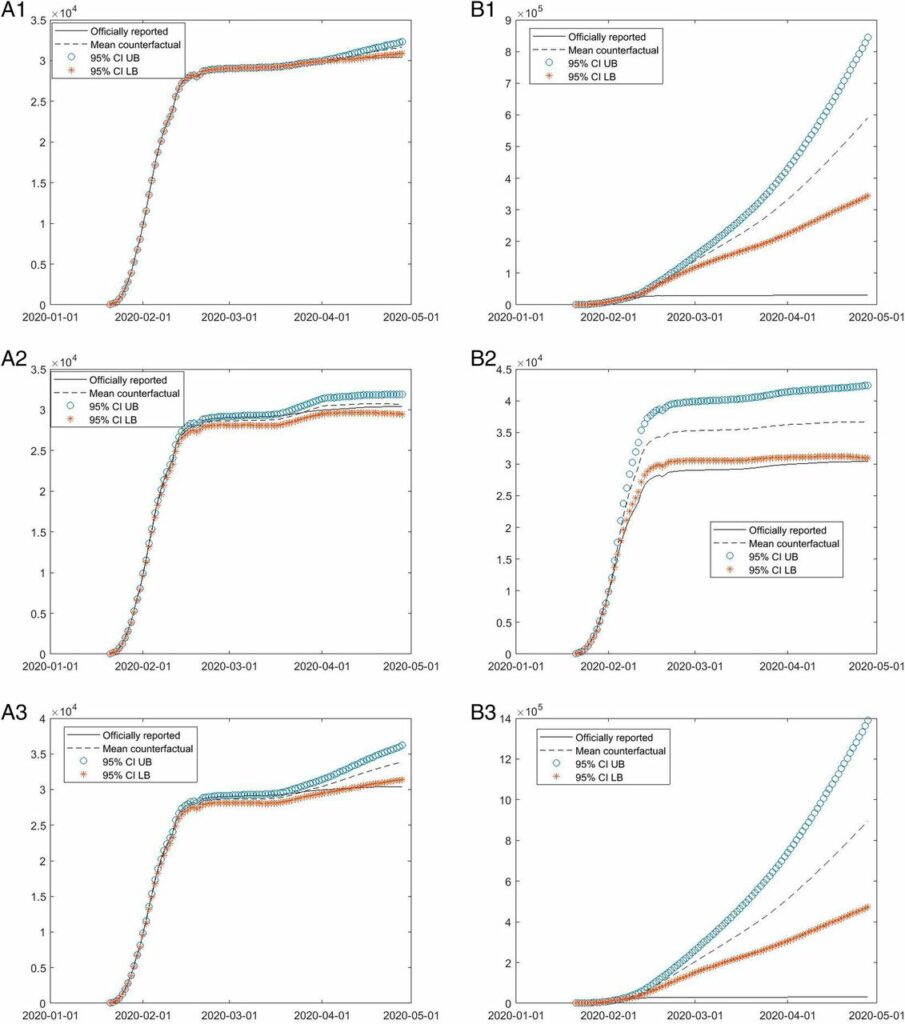- Xiao Hou, Song Gao*, Qin Li*, Yuhao Kang, Nan Chen, Kaiping Chen, Jinmeng Rao, Jordan S. Ellenberg, Jonathan A. Patz (2021) Intracounty modeling of COVID-19 infection with human mobility: Assessing spatial heterogeneity with business traffic, age, and race. Proceedings of the National Academy of Sciences. June 15, 2021, 118 (24) e2020524118; DOI: 10.1073/pnas.2020524118
Abstract:
The COVID-19 pandemic is a global threat presenting health, economic, and social challenges that continue to escalate. Meta-population epidemic modeling studies in the susceptible–exposed–infectious–removed (SEIR) style have played important roles in informing public health policy making to mitigate the spread of COVID-19. These models typically rely on a key assumption on the homogeneity of the population. This assumption certainly cannot be expected to hold true in real situations; various geographic, socioeconomic, and cultural environments affect the behaviors that drive the spread of COVID-19 in different communities. What’s more, variation of intracounty environments creates spatial heterogeneity of transmission in different regions (e.g., varying peak infection timing). To address this issue, we develop a human mobility flow-augmented stochastic SEIR-style epidemic modeling framework with the ability to distinguish different regions and their corresponding behaviors. This modeling framework is then combined with data assimilation and machine learning techniques to reconstruct the historical growth trajectories of COVID-19 confirmed cases in two counties in Wisconsin. The associations between the spread of COVID-19 and business foot traffic, race and ethnicity, and age structure are then investigated. The results reveal that, in a college town (Dane County), the most important heterogeneity is age structure, while, in a large city area (Milwaukee County), racial and ethnic heterogeneity becomes more apparent. Scenario studies further indicate a strong response of the spread rate to various reopening policies, which suggests that policy makers may need to take these heterogeneities into account very carefully when designing policies for mitigating the ongoing spread of COVID-19 and reopening.


2. Xiaoyi Han, Yilan Xu, Linlin Fan, Yi Huang, Minhong Xu, Song Gao. (2021) Quantifying COVID-19 importation risk in a dynamic network of domestic cities and international countries. Proceedings of the National Academy of Sciences. August 3, 2021, 118 (31) e2100201118; DOI: 10.1073/pnas.2100201118
Abstract:
Since its outbreak in December 2019, the novel coronavirus 2019 (COVID-19) has spread to 191 countries and caused millions of deaths. Many countries have experienced multiple epidemic waves and faced containment pressures from both domestic and international transmission. In this study, we conduct a multiscale geographic analysis of the spread of COVID-19 in a policy-influenced dynamic network to quantify COVID-19 importation risk under different policy scenarios using evidence from China. Our spatial dynamic panel data (SDPD) model explicitly distinguishes the effects of travel flows from the effects of transmissibility within cities, across cities, and across national borders. We find that within-city transmission was the dominant transmission mechanism in China at the beginning of the outbreak and that all domestic transmission mechanisms were muted or significantly weakened before importation posed a threat. We identify effective containment policies by matching the change points of domestic and importation transmissibility parameters to the timing of various interventions. Our simulations suggest that importation risk is limited when domestic transmission is under control, but that cumulative cases would have been almost 13 times higher if domestic transmissibility had resurged to its precontainment level after importation and 32 times higher if domestic transmissibility had remained at its precontainment level since the outbreak. Our findings provide practical insights into infectious disease containment and call for collaborative and coordinated global suppression efforts.


